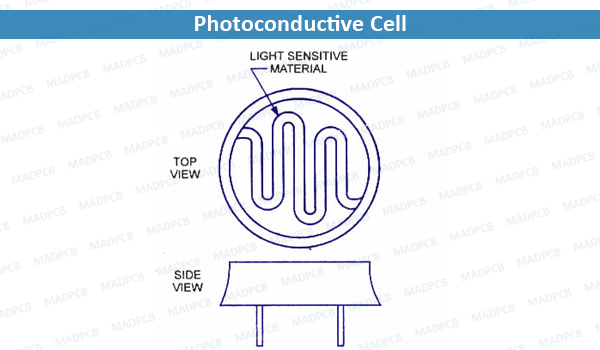What’s a Photoconductive Cell?
A Photoconductive Cell is a light-sensitive resistor in which resistance decreases with an increase in light intensity when illuminated. These devices consist of a thin single-crystal or polycrystalline film of compound semiconductor substances. The most commercially available are photoconductive cells, which are manufactured from cadmium sulfide (CdS), which is sensitive to light in the visible spectrum. Other materials that are less commonly used include lead sulfide (PbS), lead selenide (PbSe), and lead telluride (PbTe), although they react to infrared light, not the visible spectrum.
Also see Glossary Photoconductivity

Photoconductive Cell
Features
CdS photoconductive cells (CdS cells) are often referred to as light dependent resistors (LDR) – photoresistor. They function within the same general spectral range as the human eye and are therefore widely used in applications where this type of spectral response is required.
Photoconductive cells function by receiving light energy, which in turn frees electrons from their valence bonds in semiconductor material. At room temperature, the number of free charges in a semiconductor is relatively limited, but the addition of light-released electrons raises conductivity (and thereby reduces resistance). This change in resistance may be as large as several hundred thousand ohms from a darkened state to only a few hundred ohms in sunlight. Embedding the conductive path within the semiconductor substrate, in a zig-zag pattern, will enhance the level of resistance. In addition to an increase in dark resistance, this same pattern will reduce the current as well, changing the output current to about one milliampere (mA) per lumen.
Applications
Photoconductive cell is generally inexpensive, and its small size and ease of use makes it popular in many applications. Some of the many uses include:
- making street-light turn on and off automatically according to the level of daylight
- in point-of-sale and inventory bar code reading devices
- in security devices such as motion sensing lights and cameras
- in alarm systems
- as light meters in photographic applications
